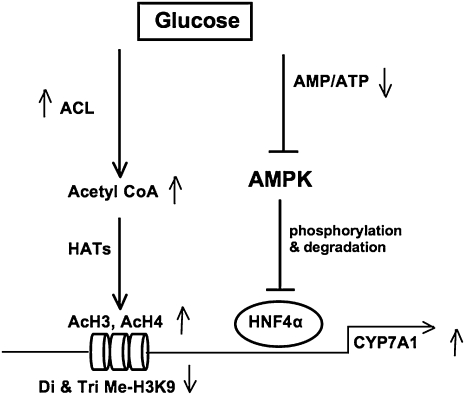Fig. 8.
A model of glucose activation of CYP7A1 gene transcription in hpatocytes. Glucose induces CYP7A1 gene transcription by two mechanisms. First, high glucose decrease the cellular AMP to ATP ratio, thus results in inhibiting AMPK activity. AMPK is known to phosphorylate and inhibit HNF4α binding to DNA and dimerization. Inactivation of AMPK increases HNF4α recruitment to CYP7A1 chromatin to induce CYP7A1 gene transcription. Second, glucose stimulates CYP7A1 gene transcription by the epigenetic mechanisms. Glucose increases nuclear ACL activity to increase acetyl-CoA, which is a substrate of histone acetyltransferases (HATs). HAT acetylates H3 and H4 on CYP7A1 chromatin, and stimulates gene transcription. Furthermore, glucose reduces chromatin occupancy of a methyltransferase G9a, which is known to inhibit CYP7A1 gene transcription. This results in de-repression of CYP7A1 gene transcription by decreasing di-and tri-methylation of H3K9 in CYP7A1 chromatin.

